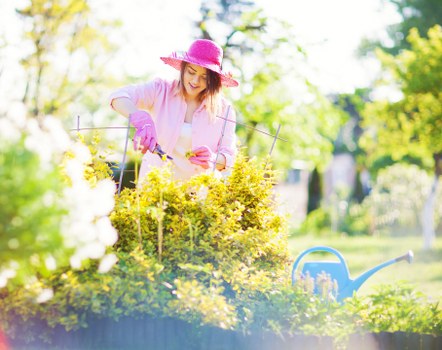Garden Maintenance in Kensington: Your Ultimate Guide to a Thriving Garden
Introduction to Garden Maintenance

Maintaining a beautiful garden in Kensington requires dedication, knowledge, and the right set of tools. Whether you’re a seasoned gardener or a beginner, understanding the fundamentals of garden maintenance can help you achieve a lush and vibrant outdoor space.
Garden maintenance in Kensington is not just about aesthetics; it’s about creating a sustainable environment that supports a variety of plant life. From selecting the right plants to regular upkeep, every step plays a crucial role in the overall health of your garden.
In this comprehensive guide, we will delve into the essential aspects of garden maintenance in Kensington, providing you with actionable tips and strategies to keep your garden thriving throughout the year.
Planning Your Garden Maintenance Schedule

One of the first steps in effective garden maintenance is creating a maintenance schedule tailored to Kensington’s climate and your specific garden needs. A well-structured plan ensures that all tasks are completed timely, preventing potential issues and promoting healthy plant growth.
Why a Schedule is Important:
- Consistency: Regular maintenance prevents overgrowth and keeps plants healthy.
- Efficiency: Helps in allocating time and resources effectively.
- Problem Prevention: Early detection of pests and diseases can save your garden from extensive damage.
Seasonal Tasks:
- Spring: Planting new flowers, pruning shrubs, and preparing soil.
- Summer: Regular watering, weeding, and monitoring for pests.
- Autumn: Leaf removal, composting, and preparing plants for winter.
- Winter: Protecting plants from frost, pruning dormant plants, and planning for the next season.
Soil Preparation and Care

Healthy soil is the foundation of a thriving garden. In Kensington, the soil composition can vary, so it's essential to assess and amend it as needed to support your chosen plants.
Steps to Prepare Your Soil:
- Testing Soil pH: Use a soil test kit to determine the pH level. Most plants prefer a pH between 6.0 and 7.0.
- Amending Soil: Add organic matter like compost or well-rotted manure to improve soil structure and fertility.
- Mulching: Apply a layer of mulch to retain moisture, suppress weeds, and regulate soil temperature.
Tips for Ongoing Soil Care:
- Rotate crops annually to prevent soil depletion.
- Incorporate cover crops during off-seasons to enrich soil nutrients.
- Regularly check and adjust soil pH based on plant requirements.
Plant Selection and Placement

Selecting the right plants is crucial for garden maintenance in Kensington. Consider factors such as climate, soil type, sunlight, and water availability when choosing plants.
Choosing Native Plants: Native plants are well-adapted to the local climate and soil conditions, making them easier to maintain and more resilient to pests and diseases.
Placement Strategies:
- Sunlight Requirements: Ensure that plants receive adequate sunlight by placing sun-loving plants in open areas and shade-tolerant plants under trees or near structures.
- Watering Needs: Group plants with similar watering needs together to simplify irrigation.
- Height and Spread: Arrange plants based on their mature size to prevent overcrowding and ensure proper air circulation.
Watering Techniques for a Healthy Garden

Proper watering is a cornerstone of effective garden maintenance in Kensington. Both under-watering and over-watering can lead to plant stress and increase susceptibility to diseases.
Best Practices:
- Deep Watering: Water deeply but less frequently to encourage deep root growth.
- Time of Day: Water early in the morning to reduce evaporation and allow plants to absorb moisture before the heat of the day.
- Drip Irrigation: Consider installing a drip irrigation system to deliver water directly to the root zone, minimizing waste.
Signs of Proper Watering:
- Healthy, vibrant leaves.
- No wilting or drooping.
- Consistent soil moisture without being soggy.
Pruning and Trimming Techniques

Regular pruning and trimming are essential for maintaining the shape, health, and productivity of your garden plants in Kensington.
When to Prune:
- Spring-Flowering Shrubs: Prune immediately after flowering.
- Summer-Flowering Shrubs: Prune in late winter or early spring.
- Trees: Annual pruning during the dormant season.
Pruning Tools:
- Hand pruners for small branches.
- Pruning saws for larger limbs.
- Shears for shaping and trimming.
Benefits of Regular Pruning:
- Encourages healthy growth and prevents disease.
- Improves air circulation around plants.
- Maintains desired plant shape and size.
Pest and Disease Management

Managing pests and diseases is a critical aspect of garden maintenance in Kensington. Early detection and intervention can save your garden from severe infestations and plant loss.
Common Garden Pests:
- Aphids
- Slugs and snails
- Japanese beetles
- Spider mites
Effective Management Strategies:
- Natural Predators: Encourage beneficial insects like ladybugs and predatory beetles to control pest populations.
- Organic Pesticides: Use neem oil or insecticidal soaps as eco-friendly pest control options.
- Regular Inspections: Frequently check plants for signs of pests or disease and take immediate action if needed.
Disease Prevention Tips:
- Ensure proper spacing for adequate air circulation.
- Avoid overhead watering to reduce moisture on leaves.
- Remove and dispose of infected plant parts promptly.
Seasonal Garden Care

Each season brings its own set of challenges and tasks for garden maintenance in Kensington. Adapting your care routine to the changing seasons ensures year-round garden health.
Spring Maintenance
Spring is the time for rejuvenation and growth. Focus on planting, soil preparation, and pruning.
Tasks:
- Planting new flowers and shrubs.
- Aerating and enriching the soil.
- Pruning dead or damaged branches.
Summer Maintenance
Summer demands diligent watering and pest control to keep plants thriving under the heat.
Tasks:
- Regular and deep watering.
- Mulching to retain soil moisture.
- Monitoring and managing pests.
Winter Garden Preparation

Preparing your garden for winter is crucial to protect plants from frost and harsh weather conditions in Kensington.
Winterizing Tips:
- Mulching: Apply a thick layer of mulch to insulate plant roots.
- Protecting Sensitive Plants: Use burlap or frost cloths to cover plants vulnerable to cold temperatures.
- Pruning: Remove dead or diseased branches to prevent damage from snow and ice.
Preparing Garden Tools:
- Clean and dry tools to prevent rust.
- Sharpen blades for the upcoming season.
- Store tools in a dry, sheltered place.
Choosing the Right Tools for Garden Maintenance

Having the appropriate tools makes garden maintenance in Kensington more efficient and enjoyable. Invest in quality tools to ensure longevity and performance.
Essential Garden Tools:
- Hand Pruners: For snipping small branches and shaping plants.
- Garden Shears: Ideal for trimming hedges and shaping shrubs.
- Shovel and Spade: Necessary for digging, planting, and soil preparation.
- Garden Fork: Useful for aerating soil and turning compost.
- Watering Can or Hose: For efficient watering of plants.
Tool Maintenance:
- Regularly clean tools after use to prevent disease spread.
- Sharpen blades to ensure clean cuts.
- Store tools properly to avoid damage and prolong their lifespan.
Fertilizing Your Garden
Fertilizing provides essential nutrients that plants need to grow and flourish. Proper fertilization is a key component of garden maintenance in Kensington.
Types of Fertilizers:
- Organic Fertilizers: Such as compost, manure, and bone meal, which improve soil structure and fertility.
- Inorganic Fertilizers: Synthetic options that provide targeted nutrients.
- Slow-Release Fertilizers: Offer a steady supply of nutrients over an extended period.
Fertilizing Techniques:
- Follow the recommended dosage to avoid over-fertilization.
- Apply fertilizer evenly around the base of plants.
- Water plants thoroughly after fertilizing to help nutrients penetrate the soil.
Signs Your Garden Needs Fertilizer:
- Yellowing leaves.
- Stunted growth.
- Poor flowering or fruiting.
Weeding Strategies
Weeds compete with your garden plants for nutrients, water, and sunlight. Effective weeding is essential for maintaining a healthy garden in Kensington.
Manual Weeding:
- Regularly inspect your garden and remove weeds by hand.
- Ensure complete removal of roots to prevent regrowth.
Mulching:
- Apply a thick layer of mulch to suppress weed growth.
- Organic mulches like straw or bark also enrich the soil as they decompose.
Natural Weed Killers:
- Use vinegar-based solutions to target weeds without harming the soil.
- Boiling water can be an effective method for killing stubborn weeds.
Preventative Measures:
- Plant ground covers to reduce weed growth.
- Maintain healthy soil to promote strong plant growth that can outcompete weeds.
Integrating Sustainable Practices
Incorporating sustainable practices into your garden maintenance in Kensington not only benefits the environment but also enhances the long-term health of your garden.
Composting:
- Recycle kitchen and garden waste to create nutrient-rich compost.
- Use compost to improve soil structure and fertility.
Rainwater Harvesting:
- Collect rainwater to use for irrigation, reducing water consumption.
- Set up rain barrels or a rain garden to make the most of natural rainfall.
Encouraging Biodiversity:
- Plant a variety of species to support a diverse ecosystem.
- Provide habitats for beneficial insects and wildlife.
Reducing Chemical Use:
- Opt for organic fertilizers and pest control methods.
- Avoid using harmful pesticides that can damage beneficial organisms.
Lighting and Irrigation Systems
Enhancing your garden with proper lighting and irrigation systems can significantly improve both the functionality and aesthetics of your outdoor space in Kensington.
Garden Lighting:
- Use solar-powered lights for an eco-friendly option.
- Highlight key features like pathways, sculptures, and specific plants.
- Install motion-sensor lights for added security and convenience.
Irrigation Systems:
- Drip Irrigation: Provides targeted watering directly to plant roots, reducing water waste.
- Sprinkler Systems: Suitable for larger gardens requiring uniform water distribution.
- Automated Timers: Schedule watering times to ensure consistency and efficiency.
Benefits:
- Save time and labor with automated systems.
- Ensure plants receive adequate water without over-watering.
- Enhance garden beauty and safety with well-planned lighting.
Seasonal Planting Tips
Understanding the best times to plant various species ensures that your garden in Kensington remains colorful and vibrant throughout the year.
Spring Planting
Spring is ideal for planting annuals, perennials, shrubs, and trees. The warming temperatures and increased daylight support robust growth.
Recommended Plants:
- Tulips and daffodils
- Lavender
- Roses
- Fruit trees
Summer Planting
Focus on heat-tolerant plants and maintain diligent watering schedules to support growth during the hotter months.
Recommended Plants:
- Marigolds
- Sunflowers
- Herbs like basil and rosemary
- Vegetables such as tomatoes and peppers
Dealing with Common Gardening Challenges
Every garden encounters challenges, whether it's unpredictable weather, pests, or plant diseases. Being prepared and knowledgeable can help you overcome these obstacles effectively.
Pest Infestations
Identify pests early and implement control measures promptly to prevent widespread damage.
Solutions:
- Introduce natural predators like ladybugs to control aphids.
- Use barriers such as netting to protect vulnerable plants.
- Apply organic pesticides as a last resort.
Plant Diseases
Recognizing and treating plant diseases is crucial for maintaining plant health.
Common Diseases:
- Powdery mildew
- Root rot
- Leaf spot
Treatment Options:
- Remove and dispose of infected plant parts.
- Improve air circulation around plants.
- Use fungicides appropriate for the specific disease.
Enhancing Garden Aesthetics
Aesthetics play a significant role in garden maintenance in Kensington. Creating a visually appealing garden involves thoughtful design and maintenance practices.
Color Coordination
Choose plants with complementary colors to create a harmonious and vibrant garden.
Tips:
- Use a color wheel to select matching or contrasting plant colors.
- Incorporate a mix of flowering plants for continuous color throughout the seasons.
- Consider the color of foliage as well as flowers for added depth.
Garden Structures
Incorporate structures like pergolas, trellises, and benches to add interest and functionality to your garden.
Benefits:
- Provide support for climbing plants.
- Create shaded areas for relaxation.
- Add vertical interest to the garden landscape.
Pathways and Borders
Define garden spaces with well-placed pathways and borders to enhance organization and accessibility.
Ideas:
- Use stone or gravel for natural-looking pathways.
- Plant low-growing shrubs or flowers along borders for a neat appearance.
- Incorporate edging materials to prevent grass from encroaching into garden beds.
Hiring Professional Garden Maintenance Services
While DIY garden maintenance can be rewarding, sometimes hiring professionals ensures that your Kensington garden receives the best care possible.
Benefits of Professional Services:
- Expertise: Professionals have the knowledge and experience to handle complex gardening tasks.
- Time-Saving: Saves you time, allowing you to enjoy your garden without the hassle of maintenance.
- Customized Care: Tailored maintenance plans to meet the specific needs of your garden.
Choosing the Right Service:
- Check for licenses and certifications.
- Read reviews and ask for references.
- Ensure they offer the services you need, such as lawn care, pruning, or pest control.
When to Consider Hiring Professionals:
- Extensive garden projects or landscape redesigns.
- Recurring maintenance tasks that are time-consuming.
- When facing persistent pest or disease issues.
Conclusion: Achieving a Beautiful Garden in Kensington
Effective garden maintenance in Kensington is a blend of planning, care, and adaptability. By following the strategies outlined in this guide, you can create and maintain a garden that not only looks stunning but also thrives in the local climate.
Remember, a well-maintained garden is a reflection of your dedication and love for nature. Whether you choose to handle maintenance tasks yourself or enlist the help of professionals, the key is consistency and attention to detail.
Start your garden maintenance journey today and enjoy the beauty and tranquility that a thriving garden brings to your Kensington home.
Contact us today to discover how our expert garden maintenance services can help you achieve the garden of your dreams.